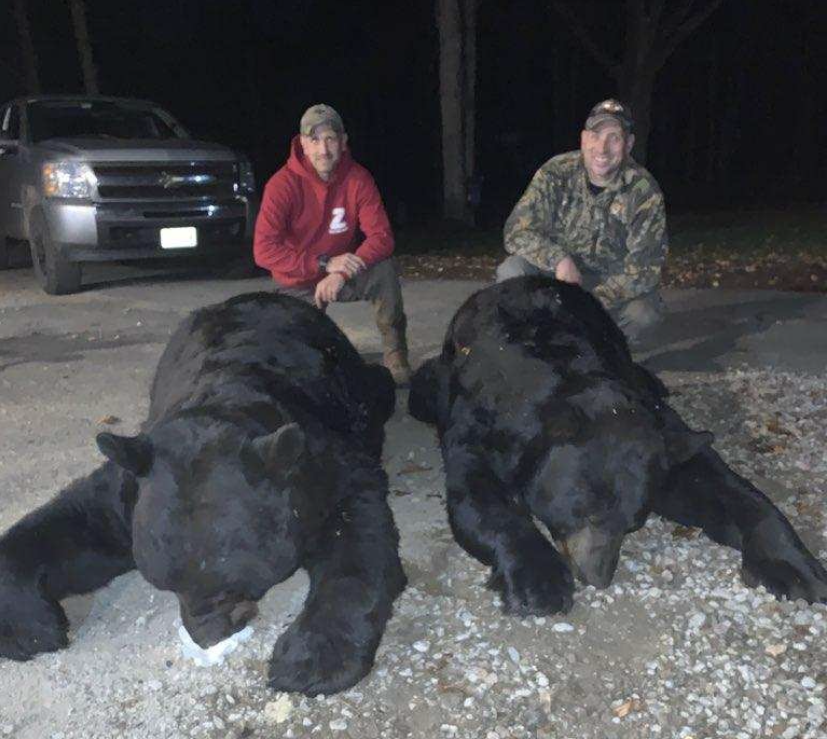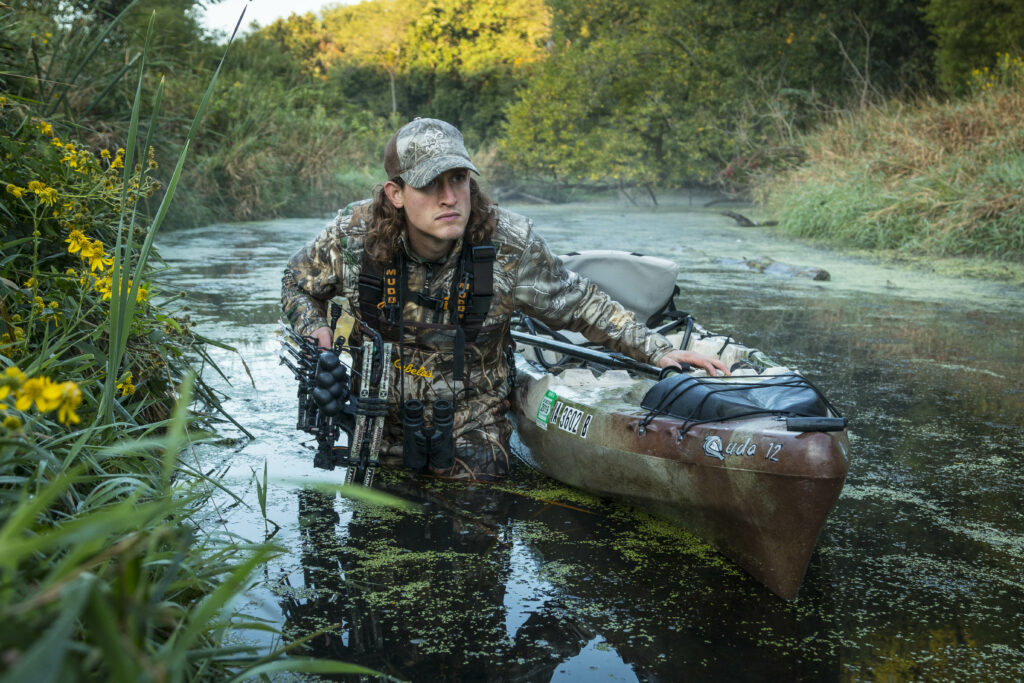New Archery World Record Black Bear

Pope and Young Club Names New World Record Black Bear During Special Panel Chatfield, MN – On Saturday, February 8th, the Pope and Young Club convened a Special Panel of Judges in Harrisburg, Pennsylvania, during the Great American Outdoors Show, for a potential P&Y World Record Black Bear. Jeff Melillos’ massive bear scored 23 5/16 and is now the largest bow-harvested black bear in North America. The bear was shot in Morris County, New Jersey, on October 14th, 2019. Measurers present at the Special Panel were Dan Lynch, of Pennsylvania, P&Y Director of Records, Eli Randall, Terry Mollett of Pennsylvania, and Timothy Walsh of New Jersey. With a final score of 23 5/16, Jeff’s bear was confirmed as the new P&Y World Record Black Bear. This bear surpasses the previous World Record shot by Robert J. Shuttleworth Jr., taken in Mendocino County, California, on September 4th, 1993, with a score of 23 3/16. “It has been an inspiring journey, to say the least,” said Jeff Melillo. “New Jersey, my home state, has its First-Ever World Record Animal! Many years ago, I read an article in Outdoor Life Magazine stating that the New World Record Black Bear will most likely come from New Jersey. They were spot on, and I never doubted it for one second. I’m very grateful that I get to be a part of all this. Pursuing bears with bow and arrow is a passion of mine. I’d also like to recognize the New Jersey Division of Fish and Wildlife for the outstanding effort they put into the management of New Jersey Black Bears. The dedication from our biologists, technicians, and Conservation Officers, make this all possible. I’d also like to give a big thanks to United Bow Hunters of New Jersey. Their organization had a lot to do with getting a bowhunting season for New Jersey black bears. Without their efforts, I would not be writing this.” You can see the life-size mount of this incredible animal at the P&Y Annual Convention in Virginia, March 26th – 28th, as part of the Bass Pro/Cabela’s Trophy Tower. The largest display of World Record, North American, bow-harvested, big-game animals ever assembled. For Convention information, go to https://www.pope-young.org/convention/default.asp. To register, go to http://tools.eventpower.com/web_site/68/PYC-Convention-Registration. “I knew I was going to be looking at an impressive Black Bear skull, as it was officially measured at over 23 inches and weighed in at 700 pounds,” said Eli Randall, Records Director for the Pope and Young Club. “I was not prepared for the amount of mass the skull possessed, not only was the skull huge, but the bone structure was the heaviest I had ever seen. Congratulations to Jeff Melillo on harvesting this outstanding black bear. This is a true testament to the North American Model of Wildlife Conservation and a shining beacon of what can be accomplished with efforts and funds being dedicated to wildlife.” This World Record Black Bear has been entered into the 32nd recording period representing entries accepted into the P&Y Records Program from January 1st, 2019, to December 31st, 2020. At the close of every biennial recording period, numerical awards and honorable mentions are awarded to the most outstanding bow-harvested animals in each species category that have been entered during this two-year recording period. New World’s Records are verified and proclaimed, and awards are presented to these outstanding animals during the Pope and Young Club’s Biennial Convention and Awards Banquet. The Pope and Young Club is a non-profit North American bowhunting and wildlife conservation organization dedicated to the promotion and protection of our bowhunting heritage and values and the welfare of wildlife and habitat. The Club also maintains the universally recognized repository for the records and statistics on North American big game animals harvested with a bow and arrow. Contact the Pope and Young Club office at: www.pope-young.org or P.O. Box 548, Chatfield, MN 55923, Ph: 507.867.4144 Media contact Rick Mowery at rick@pope-young.org, Ph: 989.884.3800
Whitetails of the Northern Mississippi River

The “Big Muddy” is producing big whitetails and there’s plenty of public land to hunt them. By Bernie Barringer Take a look at the areas of the Midwest which consistently produce big whitetail bucks and you’ll find some similarities. Winona and Houston counties in the far southeastern part of Minnesota have produced more Pope & Young bucks per square mile than any other counties in Minnesota. Just across the border into Iowa is Allamakee County which has produced the most P&Y bucks of any county in the famously whitetail-rich Hawkeye State. Just east of there in Wisconsin, you’ll find Buffalo County which has produced far and away more Boone & Crockett and P&Y bucks than any other county in North America. Just across the southern border into Illinois, is Jo Daviess county, a place well known for big bucks. Farther south in Illinois is the area of the state that is known as the “Golden Triangle” of big bucks among serious Trophy deer hunters. It consists of Pike, Adams, Schuyler and Brown counties. Back to the west again are Clark, Pike, Lincoln, St. Charles and St. Louis counties in Missouri. Starting to notice a pattern? What you’ve just read is a list of the majority of the top counties in North America which consistently produce record book bucks; and it might surprise you to find that they all have one thing in common: The Mississippi River. This is no coincidence. In fact, it’s one of the best kept secrets in whitetail deer hunting, and to make it even more appealing, there’s an abundance of public hunting land all along the Mighty Mississippi where anyone can hunt whitetails without an outfitter or guide. The best of this is found along the river from St. Paul, Minnesota to St. Louis, Missouri. The river has been forever altered by the lock and dam system which creates floodplain and islands, most of which fall under the jurisdiction of the US Army Corps of Engineers (ACOE) and the US Fish and Wildlife Service. Land on either—and sometimes both–sides of the river has been set aside and protected from development. Because this is federally owned land, most anything that isn’t within the boundaries of a wildlife reserve or a park is open to hunting by the public. Few deer hunters—including many locals–fully understand the opportunities available here. Part of the reason it’s overlooked is the difficulty of access. Roads are limited and often muddy after rains. Many excellent hunting areas are accessible only by boat. Overall, it’s a challenging place to hunt, but of course all deer hunters know that the more challenging it is, the better the odds that bucks are growing old back in there out of reach of all but the most dedicated hunters. The Upper Mississippi Fish & Wildlife Refuge borders more than 260 miles of the River from Minnesota and borders most of Iowa and the northern half of Illinois. Dozens of state- and county-owned public hunting areas create even more access points. Generally, the ACOE owns land near the dams while lands between the dams are owned by other agencies. Any of these can hold good deer hunting; and for the most part, it gets less hunting pressure by deer hunters than the properties away from the river. The key to having hunting success is finding the right elevations and the food. Lower islands and floodplains are often characterized by large silver maple trees with little understory due to the frequent flooding. Deer travel through these areas, but find little food or bedding cover. Look for islands and shorelines with higher elevations, and you will find oaks and hickory along with their associated food. Because these higher elevation islands rarely flood, they can be well covered with forbs and the kinds of lush browse that deer look for to utilize both as food and bedding cover. Dozens of tributaries empty into the big river, most of which offer deltas that feature excellent deer habitat. Many of these are a mix between private farmland and wooded plains; ideal deer habitat. Accessing these areas can be difficult, but the use of a boat, canoe or Kayak can put a hunter into some prime areas that few other hunters will ever see. The upper part of the river bordering Minnesota and Wisconsin tends to be characterized by more sandy bottom, with some limestone outcroppings, in fact some of it can be waded, and getting to hunting areas most people don’t go is as simple as crossing a barrier of some sort such as a creek. It’s surprising how many deer live on the islands. Imagine being able to do a DIY public land hunt in the famous Buffalo County, Wisconsin where nearly 80% of the farmland is leased by outfitters. The areas bordering Illinois and Missouri tend to be silt and mud, with large backwater areas that see few if any deer hunting pressure. If you are looking for elbow room (and there’s platy of it) you’ll need a boat to hunt with any significant degree of success away from hunting pressure. In Pike County, Illinois are found some of the most famous and successful whitetail outfitters, and you can hunt right in their back yard for free. Some of the best places to hunt are areas where the fertile croplands surrounding the river meet with the public forested lands. Much of the upper river is characterized by steep bluffs right down to the river’s edge, but where the river widens, crops are often planted for miles along the river, while a narrow strip of publicly owned timber separating the water from the fields creates a travel corridor for cruising bucks. These places can be excellent spots to park yourself in a treestand for long hours during the first two weeks of November. Swimming and wading are normal parts of the daily lives of deer which live here. They routinely cross from island to island, and often bed on islands and feed
